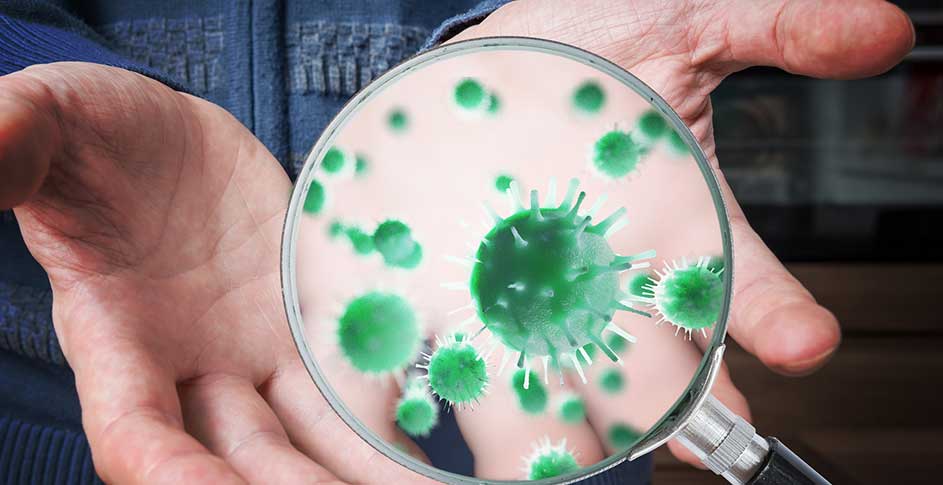There will be another global pandemic.
It might be a virus, bacteria, fungi, protozoa, or prion. It might spread via air, water, surfaces, insects, skin, or blood. It might come from an animal or be developed in a lab.
We don’t know when. We don’t know what. But we do know it's coming. Thus, it would be wise for organizations and governments to start preparing now.
Per the World Health Organization (WHO), here are 5 viral families already in the U.S. which could spark the next pandemic.
Notes on Terminology and Selection
Priority vs. Prototype Pathogens: The WHO’s most recent guidelines prioritize research into viral families rather than specific viral variants. They can thus target research into pathogens which are a threat now (priority pathogens) while simultaneously keeping an eye on certain pathogens from the same family (prototype pathogens). Note that some viruses are both priority and prototype pathogens.
Pandemic vs. PHEIC: The WHO’s guidance does not use the term “pandemic” but instead rates pathogens by their potential to cause a Public Health Emergency of International Concern (PHEIC). This might mean a local epidemic that has international implications, or it might mean a true global pandemic. We limited our list to viral families with at least one member rated as having a high PHEIC risk.
Coronaviridae: COVID Has a Lot of Cousins
Priority Pathogen(s): Subgeni Merbecovirus & Sarbecovirus
Prototype Pathogen(s): Subgeni Merbecovirus & Sarbecovirus
Common Name(s) for Disease(s): Middle East Respiratory Syndrome (MERS), Severe Acute Respiratory Syndrome (SARS), Coronavirus Disease 19 (COVID-19)
The world is all too well acquainted with this viral family. Coronaviruses used to be merely a nuisance — one of the many causes of seasonal colds. Since 2003, however, coronaviruses have caused 3 newsmaking global outbreaks — MERS, SARS, and COVID-19. MERS is fortunately limited to those in close contact with camels. COVID-19, by contrast, shocked the world to a standstill. With such a prolific pandemic record, we will likely see other novel coronaviruses in our lifetimes.
Flaviviridae: Another Reason to Hate Mosquitos
Priority Pathogen(s): Orthoflavivirus zikaense, Orthoflavivirus dengue, Orthoflavivirus flavi
Prototype Pathogen(s): Orthoflavivirus zikaense, Orthoflavivirus dengue, Orthoflavivirus encephalitidis, Orthoflavivirus nilense
Common Name(s) for Disease(s): Zika, Dengue Fever, Yellow Fever
Mosquitos are a perennial annoyance in summer, but they used to be far worse. Summer was once Yellow Fever season, killing 10% of Philadelphia’s population in 1793. Improved mosquito controls (plus the end of the transatlantic slave trade) had all but eliminated the disease in the United States by the early 20th century.
But warmer temperatures and increased global travel risk the re-emergence of Yellow fever and its relatives into northern climes. The related Dengue fever, once an exclusive scourge of the tropics, is spreading locally in the continental United States this year. No antiviral drugs are available for this family of viruses.
Hantaviridae: Squeak, Squeak, Cough
Priority Pathogen(s): Orthohantavirus sinnombreense
Prototype Pathogen(s): Orthohantavirus sinnombreense, Orthohantavirus hantanense
Common Name(s) for Disease(s): Hantavirus Pulmonary Syndrome (HPS), Hemorrhagic Fever with Renal Syndrome (HFRS)
Hantaviruses are usually transmitted to humans through contact with rodent droppings, urine, and saliva. What makes them interesting is that they cause different diseases in different hemispheres.
In the Eastern hemisphere, rodent hantaviruses cause HFRS, which in addition to being very painful also can cause kidney failure. The particular subvariant of the virus determines the fatality rate, which ranges from 1 to 15%.
In the Western hemisphere (including the United States), hantaviruses cause HPS. In its early stages, HPS appears to just be a bad fever. However, in its late stages, many start to experience respiratory symptoms. Thirty-eight percent of these die as they drown in their own lung fluid.
Orthomyxoviridae: The Perennial Pandemic
Priority Pathogen(s): Alphainfluenzavirus Influenzae H1 & H5
Prototype Pathogen(s): Alphainfluenzavirus Influenzae H1, H2, H3, H5, H6, H7, & H10
Common Name(s) for Disease(s): The Flu, Influenza, Bird Flu, Swine Flu
The Flu is the heavy hitter of pandemics. Per one article by doctors at the National Institute of Health, “there may have been at least 14 [influenza] pandemics over the past 500 years (1509 to 2009), or approximately one pandemic every 36 years.” With Bird Flu recently jumping to mammals, some scientists are getting nervous. Others state that we have more to fear from a mutated swine or human influenza virus. But all agree that another Flu pandemic is not a question of if, but when. What actions we take to reduce indoor spread may determine whether it is more like the 2006 Swine Flu (less than 1 million dead) or the 1918 Spanish Flu (~50 million dead).
Poxviridae: A Pox on All Our Houses
Priority Pathogen(s): Orthopoxvirus variola, Orthopoxvirus monkeypox
Prototype Pathogen(s): Orthopoxvirus vaccinia, Orthopoxvirus monkeypox
Common Name(s) for Disease(s): Monkeypox, Smallpox
Smallpox has done more to shape the modern world than any other virus. It killed up to 90% of the Americas’ population, clearing the way for colonization. It was also the first disease humanity developed a vaccine for, leading to the extinction of smallpox outside laboratories.
However, Smallpox’s little sister Monkeypox (while not as devastating as first supposed) is still circulating in the United States. Thus, pox viruses bear watching.
What You Can Do
If you are not a medical researcher on the front lines of pandemic preparedness, you may feel a bit helpless in the face of a potential pandemic. However, you have more power than you realize. For instance, common sense mosquito and rodent control (such as not leaving out food or standing water) can reduce your risk of Hantavirus and Dengue fever. And you usually have to go out of your way to get Monkeypox.
COVID and the flu, however, are a bit tricker. As airborne viruses, they need a proactive airborne solution. Consider making ActivePure part of your viral defenses this cold season. Learn how devices with ActivePure stack up against airborne viruses on our testing results page.



